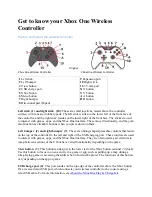
24
Installation instructions
Sensor installation
Correct arrangement and installation of the sensors is extremely important for correct functioning of
the system. It should be ascertained that the sensors are completely inserted in the immersion
sleeves. The threaded cable connections can serve as strain relief. Fundamentally sensors should not
be exposed to moisture (such as condensation) since this can diffuse through the cast resin and
damage the sensor. If this happens, heating the sensor to 90°C for an hour might help. When using
immersion sleeves in NIRO cylinders (inoxydable) or pools particular attention must be given to their
corrosion resistance
.
Boiler sensor (boiler flow)
: This sensor is either screwed into the boiler using an immersion
sleeve or attached to the flow line at a short distance to the boiler (see also "clip-on sensors").
Buffer sensor
: It is recommended to install the sensor in the upper part of the cylinder as a refer-
ence sensor using the immersion sleeve supplied. The best position as reference sensor for the load
pump between the boiler and buffer is just above the return outlet. For cylinders without a screw-in
facility for the immersion sleeve the sensor can be inserted under the insulation against the wall of the
cylinder if necessary. In this case attention should be paid to achieving a long-term secure seating
(e.g. cable fastening).
Clip-on sensor
: Optimally secured using roll springs, pipe clamps or hose band clips to the line.
Make sure the material used is suitable (corrosion, temperature resistance, etc.). Finally the sensor
must be well insulated so that the exact pipe temperature is recorded without being influenced by the
ambient temperature.
Outdoor temperature sensor:
This sensor is installed on the coldest wall (usually the north side)
approx. one to two meters above ground level.
Temperature influences from nearby air shafts, open
windows, etc. are to be avoided.
Sensor lines
All of the sensor lines with a cross-section of 0.5mm2 can be extended up to 50m. With this length of
line and a Pt1000 temperature sensor, the measurement error is approx. +1K. Longer lines or a lower
measurement error require an appropriately larger cross-section. The sensor and the probe can be
connected by putting the heat-shrinkable sleeve truncated to 4 cm over a wire and twisting the bare
ends. If one of the wire ends is tinned then the connection must be made through soldering. Then the
heat-shrinkable sleeve is put over the bare, twisted ends and carefully heated (such as with a lighter)
until it has wrapped the connection tightly.
In order to prevent measurement fluctuations, the sensor cables must not be subject to negative
external influences to ensure fault-free signal transmission. When using non-screened cables, sensor
cables and 230V network cables must be laid in separate cable channels and at a minimum distance
of 5 cm.
If screened cables are used, the screen must be connected to the sensor earth.
Содержание UVR 63H
Страница 1: ...UVR 63H Version 7 6 EN Universal heating controller Operation Installation instructions en ...
Страница 2: ......
Страница 67: ......
















































